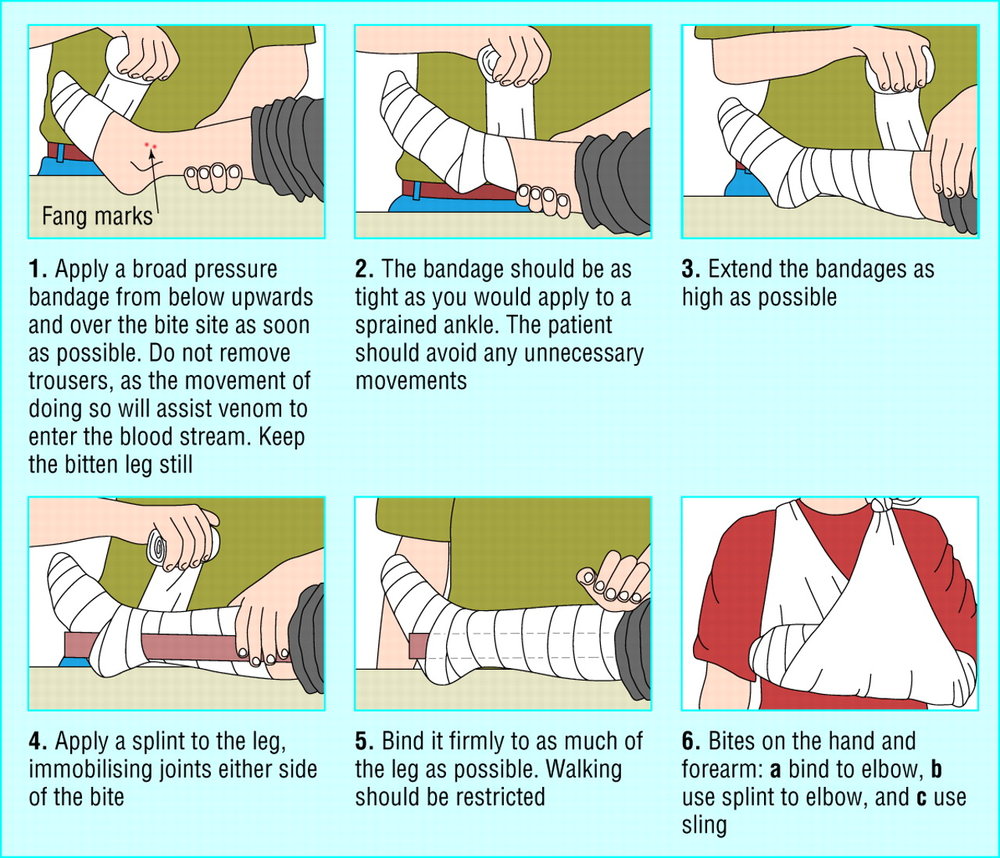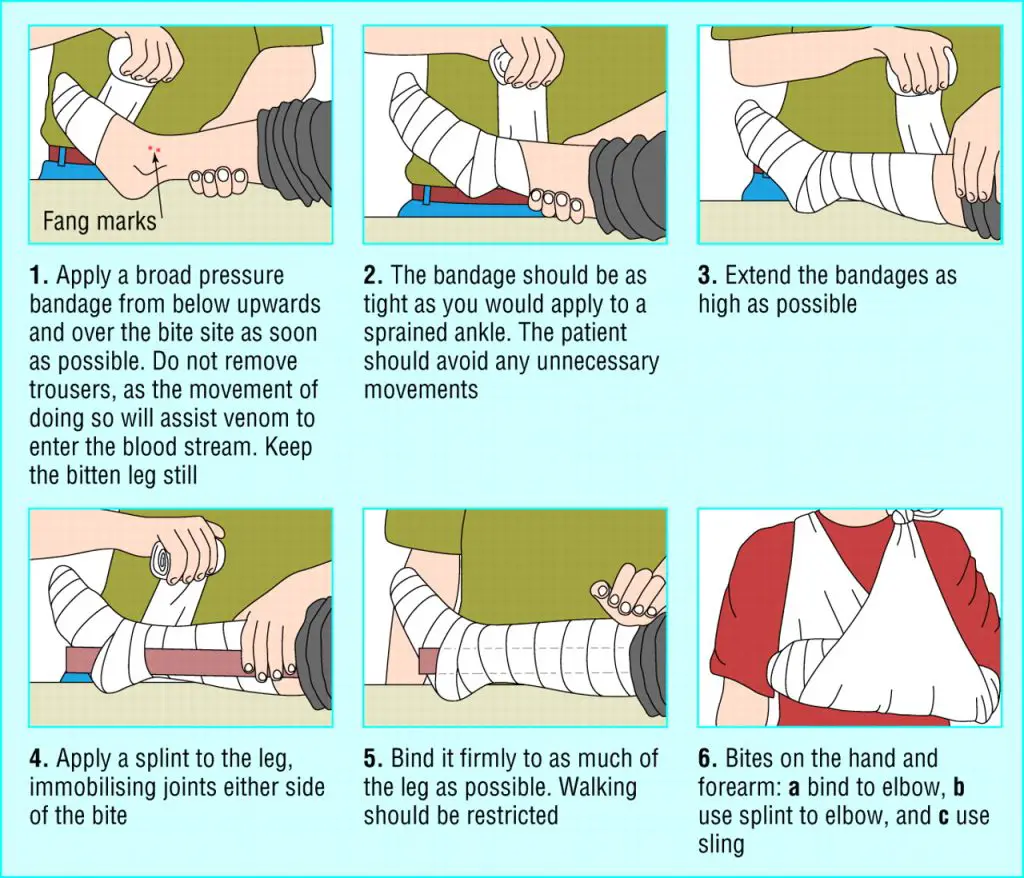Rattlesnake bites can be a terrifying experience, leaving victims in excruciating pain and potentially life-threatening situations. Knowing how to properly treat a rattlesnake bite can be the difference between life and death. In this article, we’ll explore the steps you can take to treat a rattlesnake bite and what to do in case of an emergency.
If you or someone you know is bitten by a rattlesnake, it’s important to seek medical attention immediately. While waiting for medical help, keep the affected body part immobilized and at or below the level of the heart. Do not apply a tourniquet, ice, or suction to the bite. Avoid taking any medications or alcohol. The best treatment for a rattlesnake bite is antivenom, which can only be administered by a healthcare professional.

How to Treat Rattlesnake Bites: A Comprehensive Guide
Rattlesnakes are venomous snakes found throughout North and South America. If you’re bitten by a rattlesnake, it’s important to seek medical attention immediately. In the meantime, there are a few things you can do to treat the bite and minimize the effects of the venom.
Identify the Snake
The first step in treating a rattlesnake bite is to identify the type of snake that bit you. Rattlesnakes have distinct markings, such as diamond-shaped patterns and a rattle at the end of their tail. If you can’t identify the snake, don’t waste time trying to catch it or take a photo. Instead, focus on seeking medical attention as soon as possible.
Benefits:
- Knowing the type of snake can help medical professionals determine the appropriate treatment
- It can also help prevent future bites by allowing you to avoid the area where the snake was found
Stay Calm and Immobilize the Area
When a snake bites, it injects venom into your body. This can cause pain, swelling, and other symptoms. However, it’s important to stay calm and avoid panicking. Move away from the snake, if possible, and immobilize the area that was bitten.
Benefits:
- Staying calm can help slow the spread of venom through your body
- Immobilizing the area can help prevent the venom from spreading further
Clean and Cover the Wound
Once you’ve immobilized the area, clean the wound with soap and water. Avoid using alcohol or other disinfectants, as they can cause further damage to the tissue. Cover the wound with a clean, dry bandage.
Benefits:
- Cleaning the wound can help prevent infection
- Covering the wound can help protect it from further injury and contamination
Seek Medical Attention
Even if you’re able to identify the snake and take these initial steps, it’s important to seek medical attention as soon as possible. Rattlesnake venom can cause serious health problems, including organ damage and even death.
Benefits:
- Medical professionals can administer antivenom and other treatments to counteract the effects of the venom
- They can also monitor your condition and provide additional care if necessary
Do NOT:
It’s important to know what NOT to do when treating a rattlesnake bite. These actions can worsen the effects of the venom and make it harder for medical professionals to treat you.
Do NOT:
- Cut the wound or attempt to suck out the venom
- Apply a tourniquet or tight bandage
- Apply ice or other cooling agents to the wound
- Take aspirin or other painkillers unless directed by a medical professional
Antivenom Therapy
Antivenom therapy is the most effective treatment for rattlesnake bites. It involves injecting a serum that contains antibodies to the snake venom. This helps neutralize the venom and prevent further damage to your body.
Benefits:
- Antivenom therapy can help speed up your recovery and reduce the risk of long-term health problems
- It can also help prevent the need for more invasive treatments, such as surgery
Follow-Up Care
After receiving treatment for a rattlesnake bite, it’s important to follow up with your healthcare provider. They may recommend additional tests or treatments to monitor your condition.
Benefits:
- Follow-up care can help ensure that you’re recovering properly and that there are no further complications
- It can also help prevent future bites by providing education and resources on how to avoid snakes and other dangerous animals
Rattlesnake Bite Vs. Other Snake Bites
While rattlesnake bites are the most common type of venomous snake bite in North America, there are other types of venomous snakes that can cause similar symptoms. These include copperheads, cottonmouths, and coral snakes.
Differences:
| Rattlesnake Bites | Copperhead Bites | Cottonmouth Bites | Coral Snake Bites |
| May cause severe pain, swelling, and tissue damage | May cause pain, swelling, and discoloration | May cause pain and swelling, but less likely to cause tissue damage | May cause neurological symptoms and muscle weakness |
| Have distinct diamond-shaped patterns and a rattle at the end of their tail | Have hourglass-shaped patterns on their body | Have a wide, triangular head and vertical pupils | Have red, yellow, and black bands that encircle their body |
Prevention
The best way to avoid rattlesnake bites is to take precautions when you’re in areas where snakes are common. This includes wearing long pants and boots, staying on designated trails, and avoiding areas where snakes may be hiding, such as under rocks and logs.
Benefits:
- Prevention is the best way to avoid the pain and potential dangers of a rattlesnake bite
- By taking precautions, you can enjoy outdoor activities without putting yourself at unnecessary risk
In conclusion, rattlesnake bites can be a serious health concern, but with prompt medical attention and proper treatment, most people are able to recover fully. If you’re bitten by a rattlesnake, remember to stay calm, immobilize the affected area, and seek medical attention as soon as possible. And if you’re planning to spend time in areas where snakes are common, take precautions to avoid bites in the first place.
Frequently Asked Questions
What should I do if I get bitten by a rattlesnake?
If you get bitten by a rattlesnake, the first thing you need to do is to seek medical attention immediately. Time is of the essence in treating a rattlesnake bite as the venom can spread quickly and cause serious damage to your body. While waiting for medical help, you should try to stay as calm and still as possible to slow down the venom’s spread. Do not try to suck out the venom or apply a tourniquet as these can make things worse.
How are rattlesnake bites treated?
The treatment for a rattlesnake bite depends on the severity of the bite and the amount of venom injected. In general, doctors will administer antivenom to counteract the venom’s effects and prevent it from spreading further. They may also give you pain medication and antibiotics to prevent infection. If the bite is severe, you may need to be hospitalized and monitored closely. Recovery time can vary from a few days to several weeks depending on the extent of the damage.
What are the symptoms of a rattlesnake bite?
The symptoms of a rattlesnake bite can vary depending on the type of snake and the amount of venom injected. Common symptoms include pain, swelling, and redness around the bite area, as well as nausea, vomiting, and dizziness. Some people may also experience difficulty breathing, muscle weakness, and seizures. If you suspect that you have been bitten by a rattlesnake, seek medical attention immediately.
How can I prevent getting bitten by a rattlesnake?
To prevent getting bitten by a rattlesnake, it’s important to be aware of your surroundings and avoid areas where they are known to live. Wear protective clothing like long pants and boots when hiking or working in areas where rattlesnakes are common. Be cautious when reaching into dark or concealed areas where snakes may be hiding. If you encounter a rattlesnake, give it plenty of space and do not try to handle it.
What should I do if I see a rattlesnake?
If you see a rattlesnake, it’s important to give it plenty of space and avoid disturbing it. Do not try to handle or catch the snake as this can be dangerous. If the snake is in a public area or poses a threat to people or pets, contact your local animal control or wildlife management agency to have it safely removed. Remember that rattlesnakes play an important role in the ecosystem and should be respected from a distance.
When Snakes Bite: Pre-Hospital Care
In conclusion, if you or someone you know has been bitten by a rattlesnake, it is important to act quickly. The first step is to call 911 or seek medical attention immediately. While waiting for medical help to arrive, keep the affected area still and below heart level to slow the spread of venom. Do not attempt to suck out the venom or cut the wound. Instead, focus on keeping the victim calm and comfortable.
Once medical help has arrived, treatment may involve administering antivenom, pain relief medication, and monitoring the victim’s vital signs. It is important to follow all instructions given by medical professionals and to keep the affected area clean and dry. Recovery time may vary depending on the severity of the bite, but rest and proper wound care are crucial for a successful recovery.
Overall, while rattlesnake bites can be dangerous and even life-threatening, prompt medical attention and proper treatment can greatly increase the chances of a full recovery. By staying calm, seeking medical help quickly, and following all instructions given by medical professionals, you can help ensure the best possible outcome for yourself or a loved one who has been bitten by a rattlesnake.


